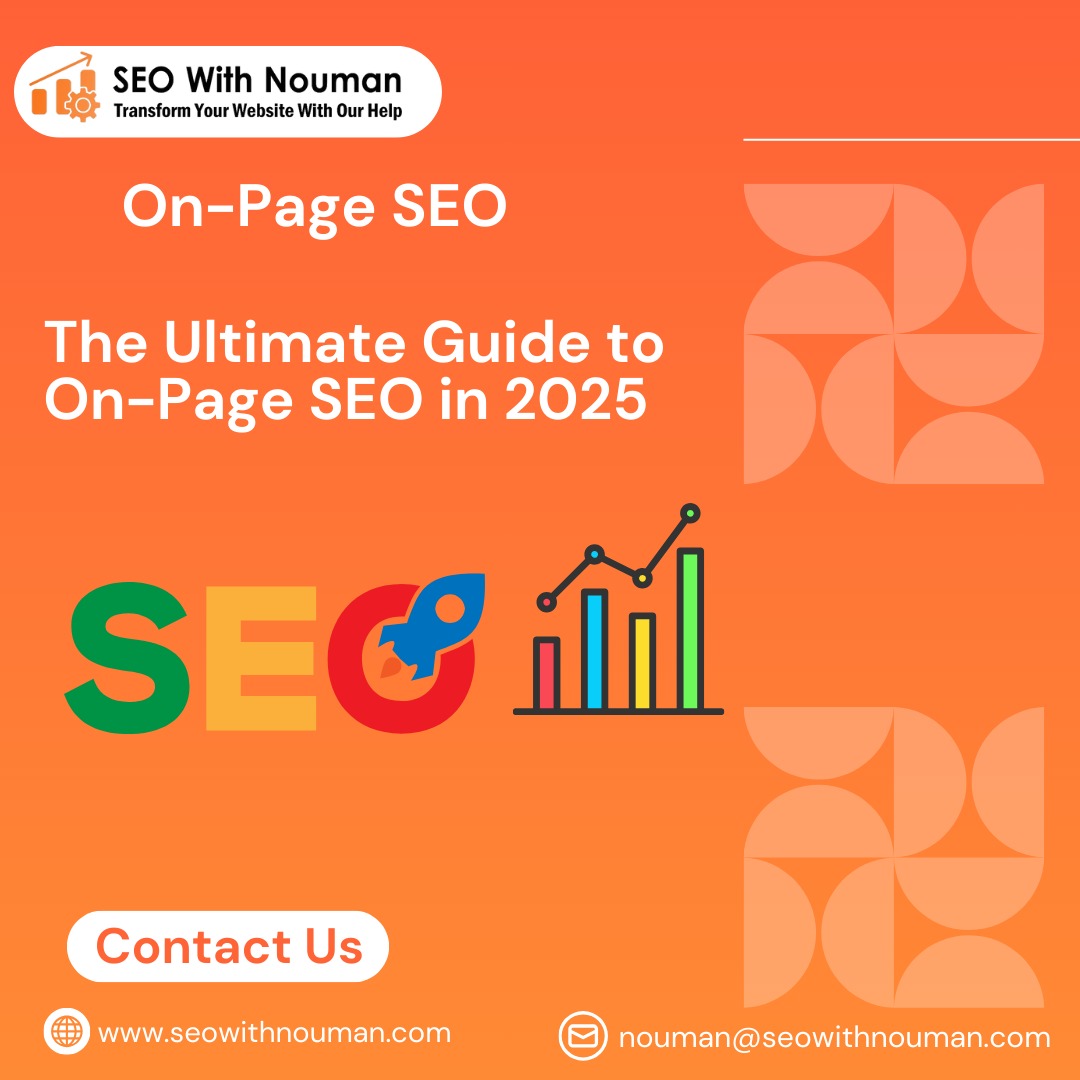The Ultimate Guide to On-Page SEO in 2025
On-page SEO is the foundation of higher rankings in Google. If you manage a website in 2025, you know getting visibility isn’t easy. There is content everywhere, and you have to compete with thousands of new pages. But users want instant and to-the-point answers. This means only well-optimized, user-friendly websites survive in organic search.
In this guide, we will talk about on-page SEO in detail and how it works.
Let’s have a look!
What Is On-Page SEO?
It is the process of optimizing the visible and invisible elements inside your website to help both search engines and visitors. It covers everything from writing strong meta titles to structuring your content. It also includes improving site speed and delivering the best possible user experience.
Whether you are a beginner or a professional, this article will give you the strategies, examples, and a checklist you can follow to get higher rankings.
Basics of On-Page SEO
On-page SEO happens inside your site. Your website has text, images, and videos, and on-page SEO optimizes all these things. By this SEO technique, you improve the overall user experience of your website. This helps Google crawlers understand what your website has.
Let’s look at what the basics include:
- Optimizing title tags and meta descriptions
- Writing SEO-friendly content
- Improve search intent
- Structuring your pages with H1, H2, and H3 headers.
- Keyword-rich URLs.
- Improving page load speed
- Core Web Vitals
- Mobile-friendliness
- Adding internal links
- Schema markup
All these things make your site easier to understand for search engines and visitors.
What Are Core On-Page SEO Elements?
- Title Tags
Your title is the first impression of your page in Google results. A weak title decreases click-through rates, even if you rank well. But the question is, how can you optimize title tags? For this, you need to follow the scheme below.
- Keep your title under 60 characters
- Use the primary or focus keyword in the title
- Create user-intent title
- Make your title actionable
Here is an Example:
Bad: “SEO | Homepage”
Good: “On-Page SEO 2025: Complete Guide to Rank Higher”
- Meta Descriptions
According to research, meta descriptions don’t directly affect rankings. However, they influence whether people click your page or not. As you know, people don’t have much time to open a website. So, they usually read the meta description and decide whether they should click on it or not.
Here are some tips to improve the meta descriptions:
- Keep meta descriptions between 150–160 characters.
- Add your main keyword
- Write like a mini-ad
Remember one important thing: meta descriptions increase the CTR. So, if you write a weak description, you will lose visitors.
- Headers (H1, H2, H3)
Headers are roadmaps for both readers and crawlers. For instance, they both understand what is next by the headers.
Let’s have a look at how to create headers:
- Use H1 only once for the main topic.
- Break content into H2 and H3 sections.
- Include related keywords in headers.
- URLs
URLs are very important when it comes to crawling. The short, clean URLs work better than long. Besides, you should use the main keywords in the URL.
Example:
Bad URL: /page?id=12345
Good URL: /on-page-seo-2025
- Content Optimization in 2025
Content is still the king of SEO, but in 2025, Google rewards helpful, original, and intent-focused content.
Search Intent
Every keyword has an intent: informational, navigational, or transactional. Your content must match that intent. In simple words, you need to understand how people search for specific products, services, and information.
For example:
“What is on-page SEO?” Informational
“Buy SEO tools” Transactional
- Keyword Strategy
If you use the right and related keywords in your content, you already won the game. But you should make a proper plan before using keywords. You should also avoid keyword stuffing. If you do it, Google can penalize your site. According to statistics, keyword density should be 1-2%, which means you can use a keyword 1-2 times per 100 words. If you cross the borderline, it will be considered keyword stuffing, and it is very dangerous.
Instead of just repeating the same keyword, focus on:
- Primary keywords (main topic).
- Long-tail keywords (specific queries).
- Semantic keywords (related terms Google expects).
Example: For “on-page SEO,” related terms may include “meta tags,” “site structure,” and “internal linking.”
- User Experience & On-Page SEO
Google uses user behavior as a ranking signal. If users leave your page quickly, it’s a negative signal. It is also known as bounce rate in SEO terms. If your website has a low bounce rate, there will be higher chances of its ranking.
Let’s know what the important user-experience (UX) factors are:
- Readability Use short sentences, simple words, and visuals.
- Engagement Add images, charts, infographics, and videos.
- Navigation Clear menus and internal links reduce bounce rate.
- Trust signals Show author details, references, and contact info.
According to research, SEO and user experience go hand in hand in 2025.
- Technical On-Page SEO Factors
Core Web Vitals
Google still relies on Core Web Vitals to measure performance.
It focuses on below factors:
- LCP (Largest Contentful Paint): Load content within 2.5s.
- FID (First Input Delay): Ensure fast interactivity.
- CLS (Cumulative Layout Shift): Avoid layout jumps.
- Mobile-First SEO
Over 70% of searches now happen on mobile. Your site must load fast and look perfect on phones.
- Page Speed Optimization
- Use a Content Delivery Network (CDN).
- Compress and resize images.
- Minify CSS and JavaScript.
- Enable browser caching.
- Structured Data & Schema Markup
Schema markup is now essential for improved visibility. It helps your site appear with extra details in SERPs (stars, FAQs, event times).
Popular schema types:
- Article schema for blogs.
- Product schema for e-commerce.
- FAQ schema for Q&A sections.
- Local business schema for local SEO.
Example: Adding a product schema can display ratings, prices, and stock status directly in Google search results.
- Future Trends in On-Page SEO
SEO is evolving, and staying ahead of trends is crucial.
- AI and SEO: AI tools help create content, but Google values originality and human expertise.
- Voice Search: Optimize for natural, question-based queries.
- Visual Search: More users search through images; alt text and image SEO matter.
- Personalized Search: Results adapt to user behavior, so content relevance is key.
- E-E-A-T (Experience, Expertise, Authoritativeness, Trustworthiness): Sites with strong expertise and authority win in competitive niches.
Final Words
On-page SEO in 2025 is more than keywords. It is a balance between technical optimization, valuable content, and user experience. From title tags and schema markup to Core Web Vitals and voice search optimization, every detail counts.
If you follow this guide and apply the checklist, your website will not only rank higher but also deliver real value to users.


